What is an inverter? Structure and working principle
1. What is an inverter?
- What is an inverter? Inverter is a device that converts direct or alternating current into alternating current with adjustable frequency and voltage.
2. Structure and operating principle of inverter
2-1.Construction of the inverter
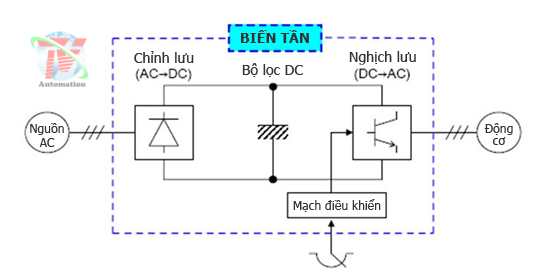
- The inverter consists of rectifier, filter, IGBT inverter, control circuit. In addition, the inverter is integrated with a number of other parts such as: AC reactor, DC reactor, braking resistor, keyboard, display screen, communication module, etc.
In addition, today’s inverters have integrated many different types of control suitable for most different types of loads. Nowadays, the inverter has integrated PID control algorithm and is suitable for many different communication standards, very suitable for control and monitoring in SCADA system.
2-2. Working principle of inverter
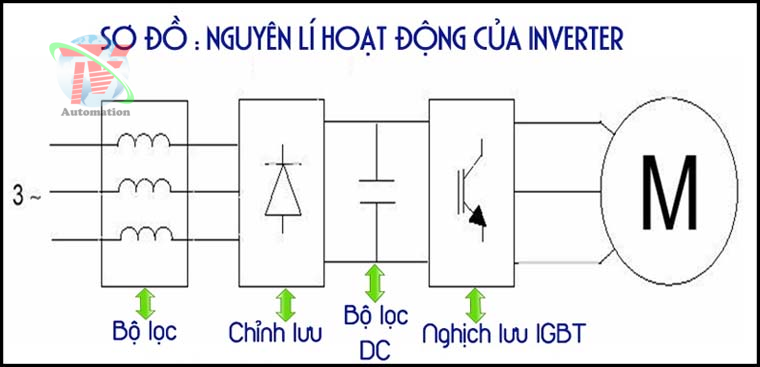
- Single-phase or three-phase AC power is rectified and filtered into a flat DC power source. This stage is performed by a diode bridge rectifier and a capacitor. As a result, the inverter’s cosphi power factor is independent of the load and has a value of at least 0.96. This DC voltage is converted (reversed) into a symmetrical 3-phase AC voltage. This stage is currently done through the IGBT (bipolar transistor) system. By pulse width modulation (PWM). Thanks to the advancement of microprocessor technology and current power semiconductor technology. The pulse switching frequency can be up to the ultrasonic frequency range to reduce the motor noise and reduce the loss on the motor iron core.
- The 3-phase AC output voltage system can change the amplitude and frequency values steplessly depending on the controller. Theoretically, there is a certain rule between frequency and voltage depending on the control mode. For loads with constant torque, the voltage-frequency ratio is constant.
- The energy conversion efficiency of the inverter is very high because of the use of power semiconductor components manufactured according to modern technology.
3. Inverter application
- Nowadays inverters are no longer an expensive luxury just for businesses. Businesses with abundant financial resources. The benefits that inverters bring to you far outweigh the costs you have to pay. Therefore, inverters are gradually becoming indispensable equipment in every factory. The benefits of using an inverter include:
- Change the motor speed flexibly, meeting technology requirements.
- Efficiently save energy, protect electrical equipment in the same system.
- Protect the engine, reduce mechanical wear.
- Increase production efficiency and productivity.
- Due to its outstanding advantages, inverters are widely used in industrial and civil applications. Especially in the industry. Here are some common applications that cannot be without an inverter. Water pumps, suction/push fans, air compressors, conveyors, lifting equipment, rolling mills, injection molding machines, rolling/unloading machines, elevators, HVAC systems, mixers, centrifuges. Improve the controllability of gearboxes, replacing the traditional stepless control mechanism in industrial machines…
4. Inverter brand
- Nowadays inverter is no longer a luxury in industry as well as in life, the question is what is inverter? almost non-existent because of its popularity.
4-1. Inverter made in Europe
- ABB inverters: Established in 1988 in Zurich, Switzerland. ABB is one of the popular inverter brands in Vietnam. Currently, ABB operates in 5 fields: electrical equipment, power system, automation and transmission, process automation and low voltage electrical equipment.

- Siemens inverters: Established in 1847 in Berlin – Germany, Siemens is a global electrical and electronic technology corporation. Siemens operates in more than 200 countries and focuses on the fields of electrification, automation and digitalisation.
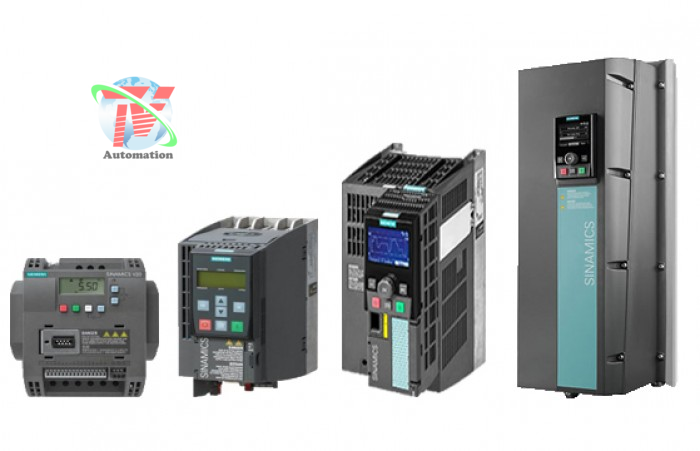
- Schneider inverter: A series of inverters of French origin, with manufacturing plants in France, China and Indonesia. This is one of the most popular European brand inverter lines in Vietnam market today.

Danfoss inverter: Is a Danish inverter series, with outstanding water resistance, manufactured in Denmark and China.
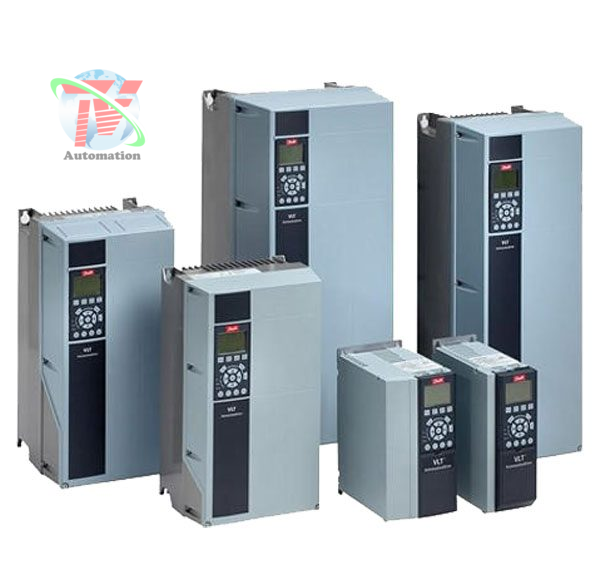
4-2. Inverter made in Japan
Yaskawa, Mitsubishi, FuJi, Panasonic, Hitachi, Toshiba… are made in Japan and China. Although Japanese inverter companies are quite expensive, they are trusted by good quality, stable operation, especially some types with specialized functions.

4-3. Inverter made in Korea
- The popular Korean manufacturer of inverters in Vietnam today is LS. This inverter has a relatively low cost compared to Japanese and European inverter lines.
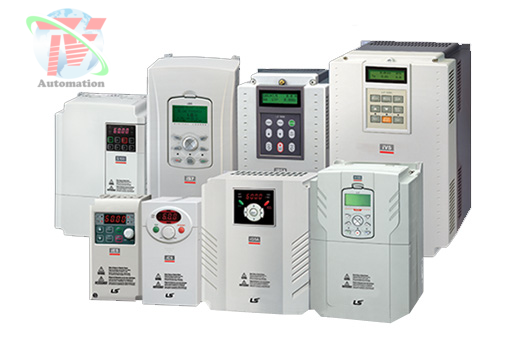
4-4. Inverter made in Taiwan
- Typical representatives of inverters from Taiwan are Delta and Shihlin. These are two quite popular inverter lines in Vietnam market, manufactured in Taiwan and China.

4-5. Inverter made in China
- Vietnam is a market that consumes a lot of products of Chinese origin, including inverters. In the past, Chinese inverters were often equated with welding poor quality, low price. However, with the development of modern technology and investment in research and development. The quality of Chinese inverters today is not even inferior to other brands. There are many Chinese inverter lines imported into Vietnam such as inverters Sinee, Sumo, Inovance, Veichi, Invt, Delixi, ENC, Powtran, Alpha, Sunfar, Rexrorth, Lion, Hedy, Chziri, Micno, Chinsc, Senlan …. With prices from medium to very cheap, but choosing a good quality, reputable and reasonable price inverter is really a difficult problem for users.
- Sinee inverter
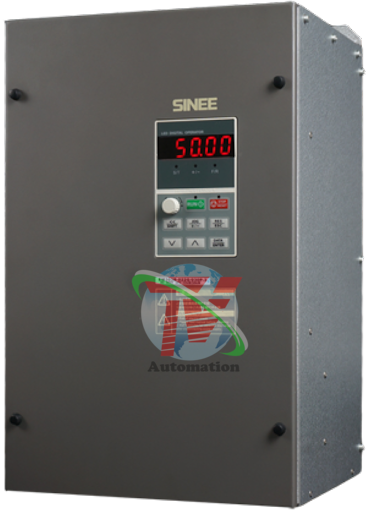
- Inovance inverter

- Delixi inverter
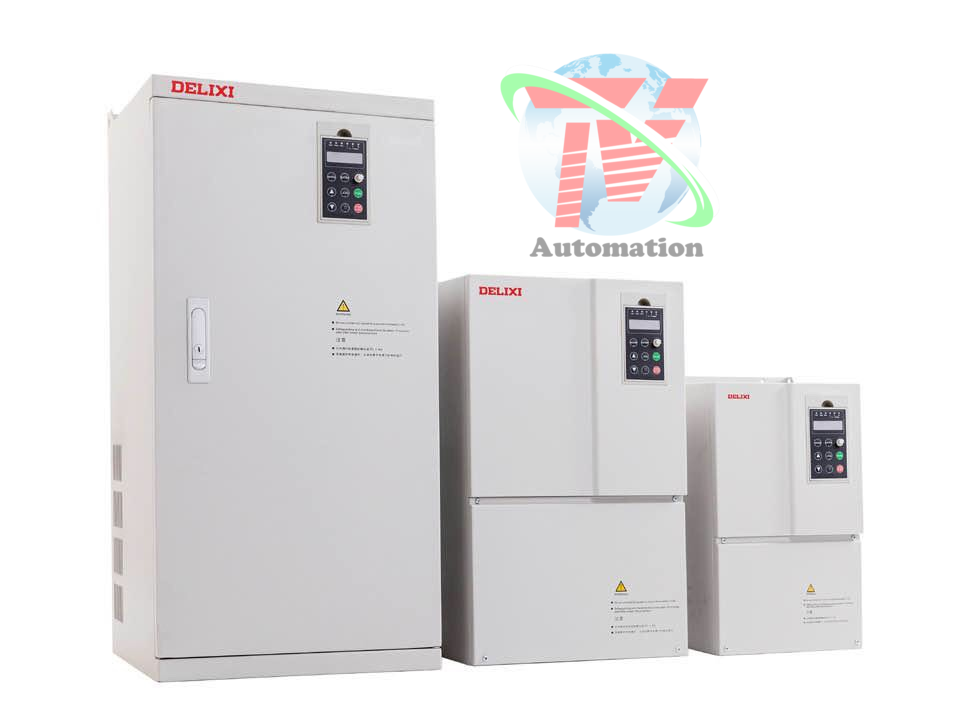
5. Contact What is an inverter? Structure and working principle
- If you have a need to buy or quote automation equipment or need further advice, please contact us immediately for dedicated, fast and effective support!
- TRI VIET AUTOMATION SOLUTION JOINT STOCK COMPANY
Ho Chi Minh Address: 36/6 street 4, quarter 5, An Lac A ward, Binh Tan district, Ho Chi Minh city.
Hanoi Address: 41/M2, Yen Hoa new urban area, Yen Hoa ward, Cau Giay district, Hanoi city
Phone: 0984868617
Email: trivietautomation.info@gmail.com
MST: 0316876097
Website: www.triviettech.com.vn – www.sineedrive.vn
Working hours: Monday – Sunday / 7:30 AM – 5:00 PM





